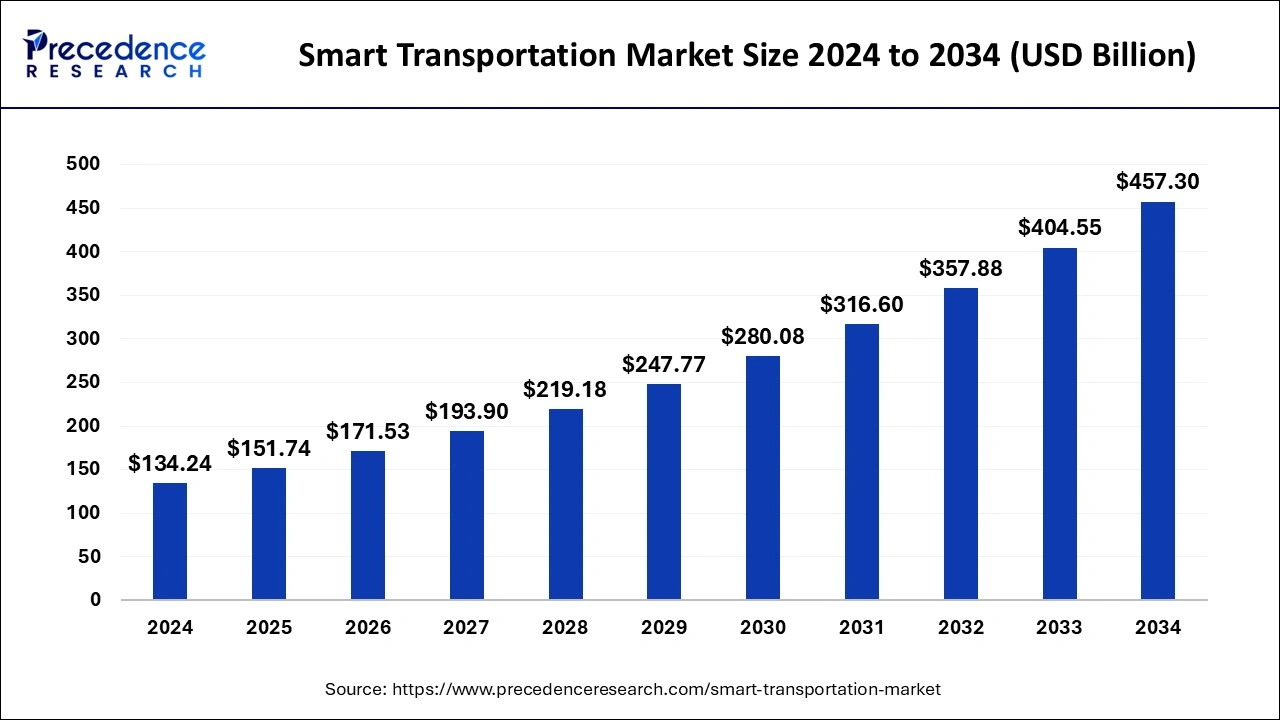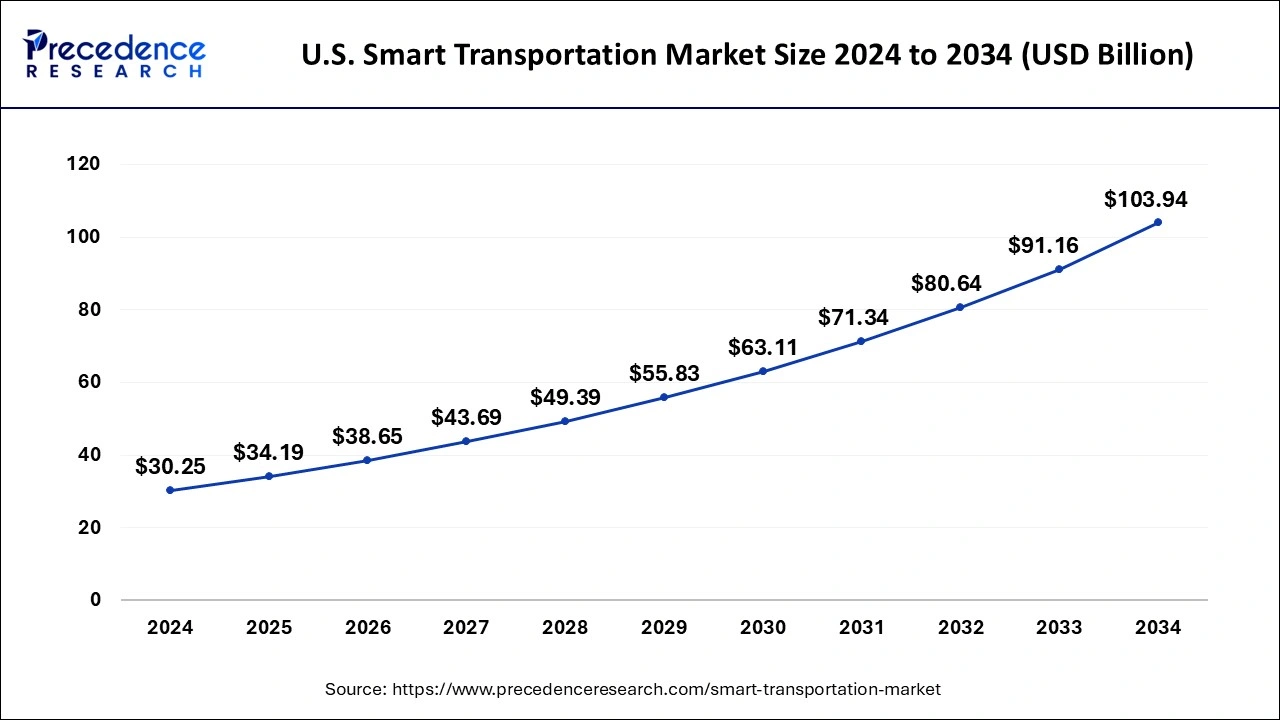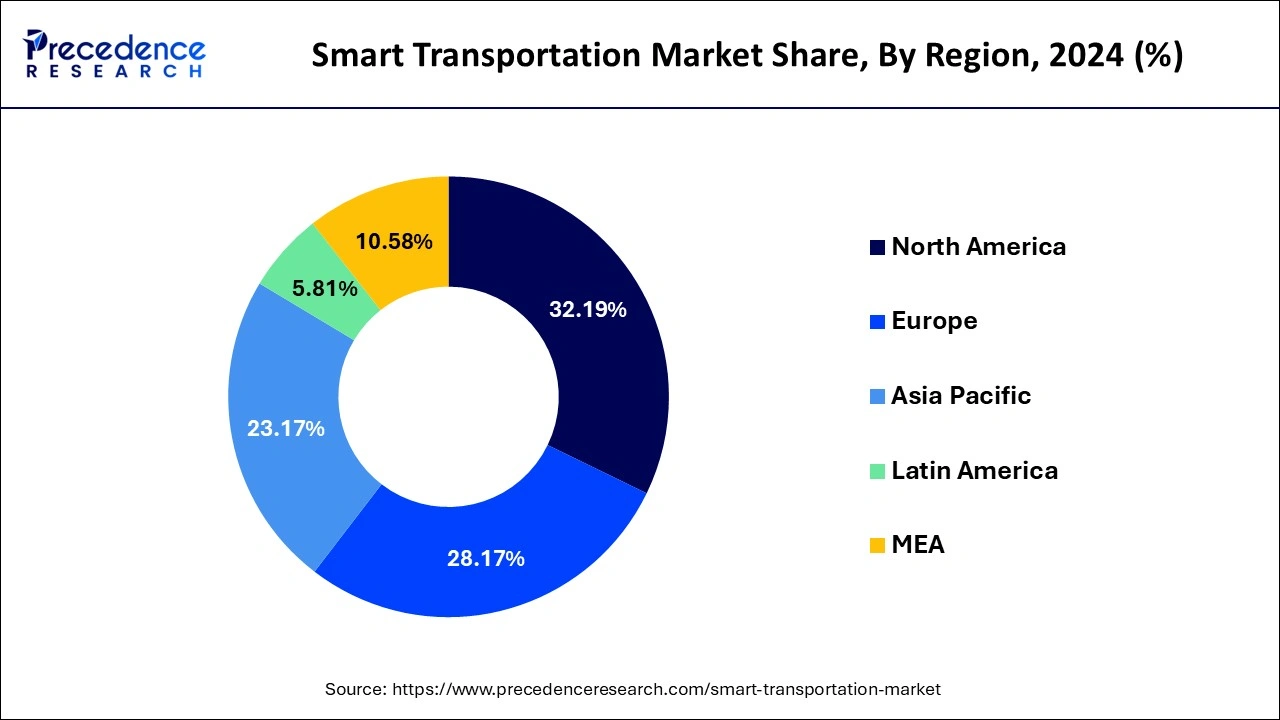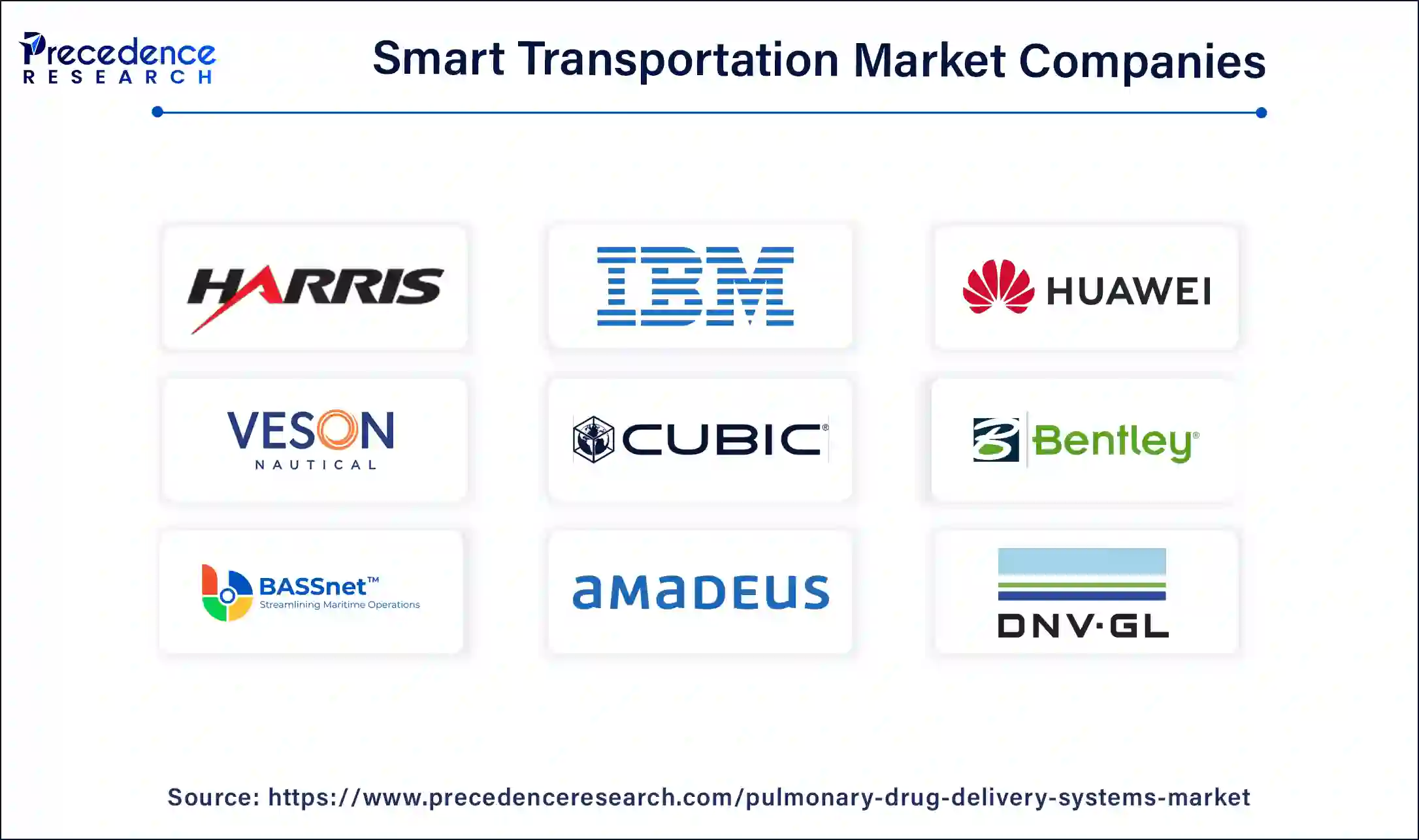January 2025
The global smart transportation market size is calculated at USD 151.74 billion in 2025 and is forecasted to reach around USD 457.3 billion by 2034, accelerating at a CAGR of 13.04% from 2025 to 2034. The North America smart transportation market size surpassed USD 43.21 billion in 2024 and is expanding at a CAGR of 13.06% during the forecast period. The market sizing and forecasts are revenue-based (USD Million/Billion), with 2024 as the base year.
The global smart transportation market size was estimated at USD 134.24 billion in 2024 and is anticipated to reach around USD 457.3 billion by 2034, expanding at a CAGR of 13.04% from 2025 to 2034. The market growth is driven by the increasing demand for efficient transportation solutions and initiatives taken by governments to promote smart transportation.

Integration of AI with conventional transportation systems is revolutionizing the transportation industry by addressing challenges like traffic congestion, road safety, and operational inefficiencies. AI-driven solutions like autonomous driving, predictive maintenance, and intelligent traffic management systems optimize urban mobility and logistics. AI collects real-time traffic data to assist traffic regulators in diverting traffic from congested regions, preventing traffic jams, and lowering collision risks. On the other hand, intelligent traffic systems improve safety and further minimize human error. AI supports efficient fleet management and contributes to more sustainable and smarter urban transportation networks.
The U.S. smart transportation market size was evaluated at USD 30.25 billion in 2024 and is predicted to be worth around USD 103.94 billion by 2034, rising at a CAGR of 13.14% from 2025 to 2034.

North America dominated the global smart transportation market with the largest market share of 32.19% in 2024. In terms of technical acceptance and infrastructure development, North America is the most advanced region in the world. It is a major player in the smart transportation market. European countries have made significant investments in rail infrastructure maintenance and upgrades. In 2024, North America is expected to have the largest share of the global smart transportation market.

On the other hand, the Asia-Pacific region is expected to have a higher CAGR during the forecast period. It can be linked to regulatory policies that have aided the rapid development of smart transportation infrastructure in nations like South Korea and China.
Smart transportation is a term that refers to one of the most important and intelligent transportation system-based applications. The Internet of Things technology is used to connect it wirelessly. The technology’s primary goal is to collect and control real-time data while also enhancing performance.
The growing demand among transportation authorities to develop smart solutions to control traffic and improve road and passenger safety is driving the growth of the smart transportation market. To improve transportation infrastructure, smart transportation systems incorporate multiple information and communication technologies such as global positioning systems, vehicle-to-grid infrastructure, fiber optics, and the Internet of Things.
Urbanization and globalization have driven the demand for smart railway software, which provides passengers with safety, dependable modern services, and operational efficiency. As the frequency of rail accidents has increased, smart sensor technologies in railway coaches that can detect faults in wheels, bearings, and railway tracks have become more important in preventing accidents. Governments from a variety of countries are also taking steps to construct smart railway networks and adopt new technologies.
| Report Coverage | Details |
| Market Size in 2025 | USD 151.74 Billion |
| Market Size by 2034 | USD 457.3 Billion |
| Growth Rate from 2025 to 2034 | CAGR of 13.04% |
| Largest Market | North America |
| Base Year | 2024 |
| Forecast Period | 2025 to 2034 |
| Segments Covered | Solution, Service, Transportation Mode, Application, Region |
| Regions Covered | North America, Europe, Asia-Pacific, Latin America, and Middle East & Africa |
Rapid urbanization led to increased traffic congestion and heightened pollution levels, underscoring the urgent need for more efficient transportation systems. This, in turn, boosts the adoption of smart transportation systems. Advancements in technologies such as artificial intelligence (AI), the Internet of Things (IoT), big data, and 5G connectivity have paved the way for the development of more sophisticated and interconnected transportation solutions that can significantly enhance mobility within urban environments. Smart technologies play a crucial role in optimizing traffic flow, minimizing travel times, and improving the overall efficiency of transportation networks. For instance, AI algorithms can analyze real-time traffic data to adjust traffic signal timings, while IoT devices can monitor vehicle movements to identify patterns and predict congestion. By leveraging big data analytics, cities can better understand transportation trends and demand, allowing for more strategic planning and resource allocation.
Implementing smart transportation systems necessitates substantial upfront investments in infrastructure, technology integration, and ongoing maintenance. Cities must allocate budgets to upgrade physical roadways, install advanced sensor networks, and ensure robust cybersecurity measures to protect sensitive data and systems. One major hindrance is cybersecurity threats, which pose a significant risk, as malicious attacks could disrupt critical services, compromise user safety, and undermine public confidence in these technologies. Stakeholders need to prioritize security protocols and develop resilient systems to mitigate these risks.
The development and deployment of autonomous vehicles, including cars and trucks, hold considerable promise for enhancing safety, efficiency, and accessibility in transportation. These vehicles are designed to reduce human error, which is a leading cause of accidents. They can provide increased mobility options for individuals with disabilities or those unable to drive. Integrating smart technologies into public transportation systems can further enhance service reliability and improve the overall passenger experience, consequently boosting market growth. Features such as real-time tracking, predictive maintenance, and mobile payment systems can reduce wait times, streamline operations, and make commuting more convenient and enjoyable for users.
The traffic management systems dominate the smart transportation market during the forecast period. The traffic management system options include route guidance systems, smart traffic lights, and the integration of CCTV cameras to offer real time information. The demand for traffic management technologies will increase as traffic volumes increase and current road infrastructure is used inefficiently.
On the other hand, the parking management systems segment is expected to grow at rapid pace during the forecast period. Among the solutions are installing sensors in the parking facilities to direct cars to available spots and offering information about on-street parking on each block via an application. These solutions result in less traffic congestion and greater efficiency in terms of maximizing parking capacity and revenue generation. As a result, these elements will contribute to the segment’s growth.
The professional services dominate the smart transportation market in 2024. The surge in demand for consulting services is expected to propel the professional services category to significant growth during the forecast period. They help to modernize current infrastructure systems by providing implementation support, strategy formulation, and design advice. As a result, these factors will contribute to the growth of the segment during the forecast period.
On the other hand, in 2024, the cloud services segment had the biggest market share. The rising difficulty of capturing and handling the massive amounts of data created by mobile technology and sensors will drive demand for cloud services.
The smart transportation industry is highly fragmented, with a small number of major market players holding a significant part of the market. In terms of market share, the smart transportation market is currently dominated by a few significant competitors. These main market companies are working on increasing their consumer base across international countries, while local governments are focusing on improving transportation infrastructure. The different types of developmental strategies such as joint venture, investments, acquisition, business expansion, new product launches, partnerships, and mergers fosters market growth and offers lucrative growth opportunities to the smart transportation market players. The main smart transportation industry players are concentrating their efforts on expanding their operations in emerging markets. These firms have a history of introducing creative and innovative solutions to expand their product offerings in the smart transportation market.

By Solution
By Service
By Transportation Mode
By Application
By Geography
For inquiries regarding discounts, bulk purchases, or customization requests, please contact us at sales@precedenceresearch.com
No cookie-cutter, only authentic analysis – take the 1st step to become a Precedence Research client
January 2025
January 2025
February 2025
March 2025